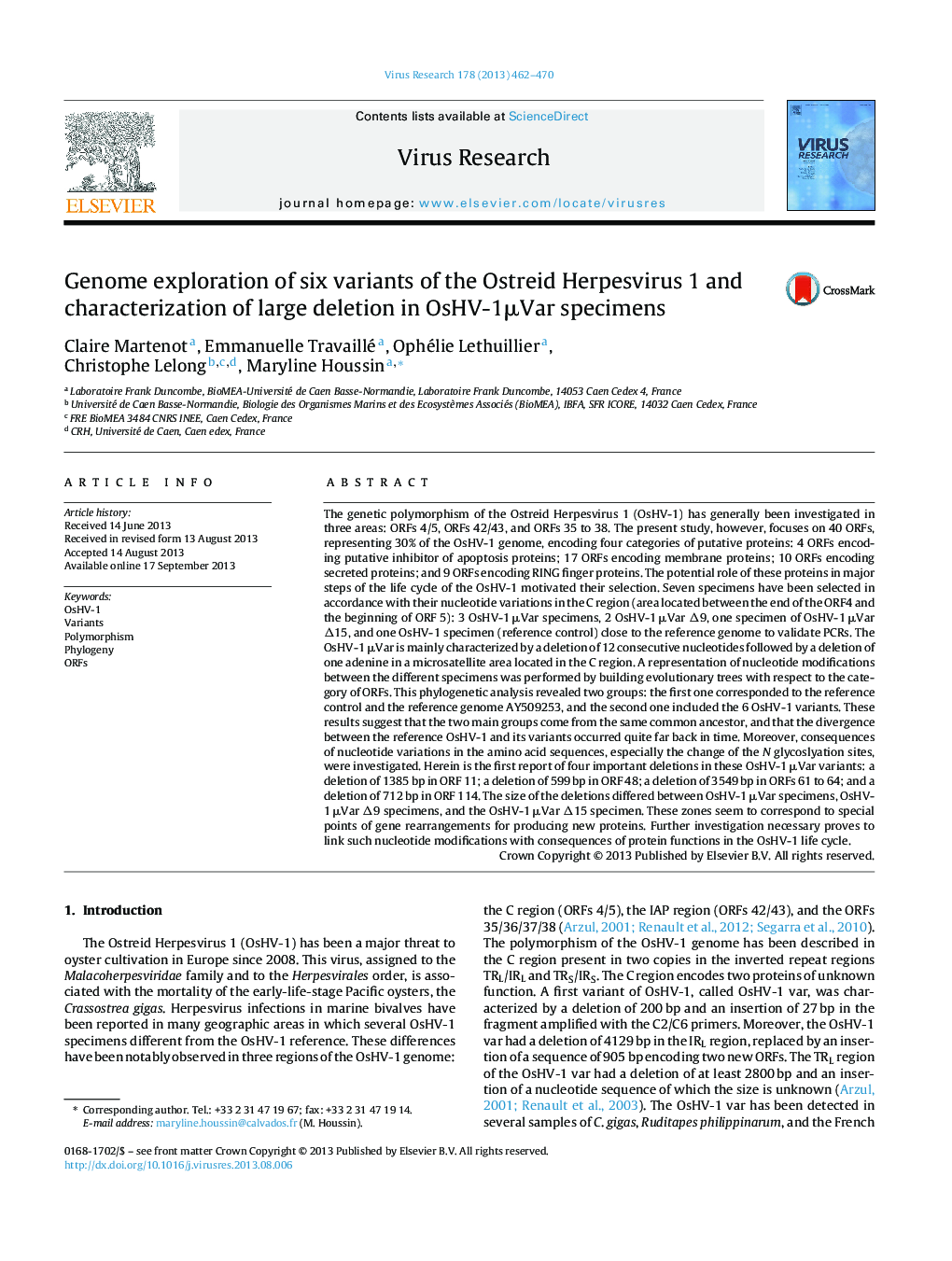| Article ID | Journal | Published Year | Pages | File Type |
|---|---|---|---|---|
| 6142728 | Virus Research | 2013 | 9 Pages |
The genetic polymorphism of the Ostreid Herpesvirus 1 (OsHV-1) has generally been investigated in three areas: ORFs 4/5, ORFs 42/43, and ORFs 35 to 38. The present study, however, focuses on 40 ORFs, representing 30% of the OsHV-1 genome, encoding four categories of putative proteins: 4 ORFs encoding putative inhibitor of apoptosis proteins; 17 ORFs encoding membrane proteins; 10 ORFs encoding secreted proteins; and 9 ORFs encoding RING finger proteins. The potential role of these proteins in major steps of the life cycle of the OsHV-1 motivated their selection. Seven specimens have been selected in accordance with their nucleotide variations in the C region (area located between the end of the ORF4 and the beginning of ORF 5): 3 OsHV-1 μVar specimens, 2 OsHV-1 μVar Î9, one specimen of OsHV-1 μVar Î15, and one OsHV-1 specimen (reference control) close to the reference genome to validate PCRs. The OsHV-1 μVar is mainly characterized by a deletion of 12 consecutive nucleotides followed by a deletion of one adenine in a microsatellite area located in the C region. A representation of nucleotide modifications between the different specimens was performed by building evolutionary trees with respect to the category of ORFs. This phylogenetic analysis revealed two groups: the first one corresponded to the reference control and the reference genome AY509253, and the second one included the 6 OsHV-1 variants. These results suggest that the two main groups come from the same common ancestor, and that the divergence between the reference OsHV-1 and its variants occurred quite far back in time. Moreover, consequences of nucleotide variations in the amino acid sequences, especially the change of the N glycoslyation sites, were investigated. Herein is the first report of four important deletions in these OsHV-1 μVar variants: a deletion of 1385 bp in ORF 11; a deletion of 599 bp in ORF 48; a deletion of 3549 bp in ORFs 61 to 64; and a deletion of 712 bp in ORF 114. The size of the deletions differed between OsHV-1 μVar specimens, OsHV-1 μVar Î9 specimens, and the OsHV-1 μVar Î15 specimen. These zones seem to correspond to special points of gene rearrangements for producing new proteins. Further investigation necessary proves to link such nucleotide modifications with consequences of protein functions in the OsHV-1 life cycle.
